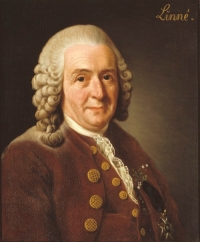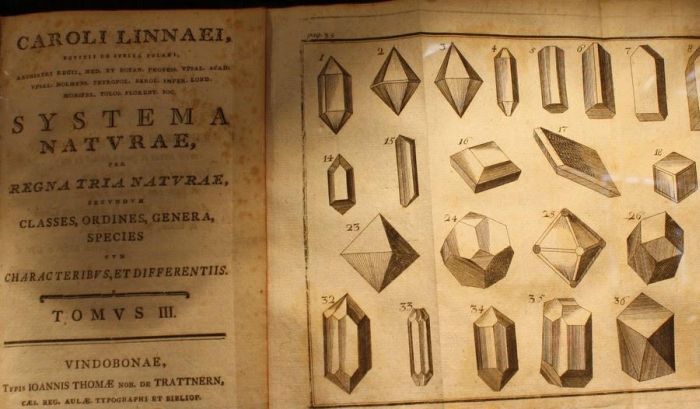18th Century Swedish physician, botanist, and zoologist Carl von Linné – latinized Carl Linnaeus – is today famous for his binomial nomenclature, a hierarchical classification scheme for every living organism.
But he was also interested in mineralogy and tried to include minerals in his system. Curiously enough, fossils, now recognized as the petrified remains of ancient organisms, were of no interest to Linné.
During his early travels in Sweden and Norway, Linné became interested in mining activities. During his time, mineral identification and classification were quite a messy thing. Only the most common minerals, like feldspar and quartz, and minerals of some economic value, like ore minerals or gemstones, even had specific names.
Basic mineral identification often relied on easy to observe properties, like color, adding to the general confusion. For example, distinct minerals like ruby and garnet were classified based on the same red color as one mineral, but color variations of the same mineral – like quartz – were all seen as different minerals.
Linné classified plants (and later animals) based on their sexual reproduction organs. The system worked, so he also adopted the idea of sexual reproduction for the classification of minerals.
Of course, minerals don’t mate or have genitals, but Linné imagined that minerals formed by the mixing of various salty fluids, acting as male parts, with different kinds of rocks, acting as female parts. His more practical approach included minerals classified by the shape of the crystal, number of crystal faces, and the observed behavior if exposed to great heat.
In contrast to his biological classification system, Linné’s mineralogical system never really became popular.
Today, minerals are defined by a specific mineralogical composition and their regular crystalline structure. Linné lacked the technology to accurately identify the chemical composition of a given mineral, and also lacked the knowledge of the physical laws that control the symmetry of crystals.
It wasn’t until the beginning of the 19th century that the first modern mineral classification books were published, such as naturalist Abraham Gottlob Werner’s Short classification and description of the various rock types and The genetic-geological classification and an attempt to introduce a mineral-system based on superficial properties by mineralogist Carl Friedrich Christian Mohs.

